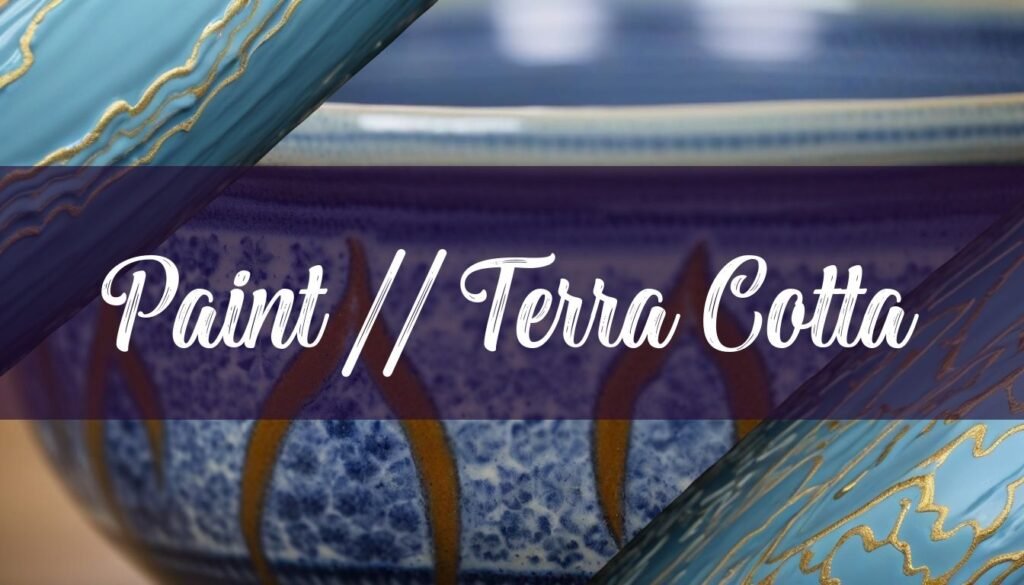Terra cotta pots, with their warm, earthy tones, are a favorite among gardeners and plant enthusiasts. Their porous nature allows for good aeration and drainage, promoting healthy root growth. However, this same porosity can make painting them a bit tricky. Choosing the best paint for terra cotta pots involves considering factors like durability, weather resistance, and the desired aesthetic. This article will guide you through the process, ensuring your painted pots look beautiful and last long.
Selecting the Right Type of Paint
When it comes to painting terra cotta pots, several types of paint can be used, each with its own set of advantages and disadvantages. Acrylic paints are often considered the best choice due to their high pigmentation and versatility. They provide bright, saturated colors, especially when used with a primer and multiple coats. Chalk paint, an ultra-matte acrylic paint, is another excellent option, often requiring fewer coats than traditional acrylics to achieve full coverage. For those looking to eliminate brush strokes, spray paint can be used, although many prefer the subtle texture that acrylics provide. While watercolor paints are not suitable due to their thin consistency, oil paints can be used, but they require months to dry completely on terra cotta. Ultimately, acrylic craft paint or spray paint work well on terracotta pots.
Preparing Terra Cotta Pots for Painting
Proper surface preparation is crucial for ensuring optimal paint adhesion and longevity. Start by cleaning the terra cotta pot to remove any dirt, dust, or stickers. Soaking the pot in warm water can help loosen any stubborn grime. If necessary, use fine-grit sandpaper to smooth any rough areas. Allow the pot to dry completely, which may take 24-48 hours. Priming is an essential step, especially for outdoor use. Apply one to two coats of a clay pot sealer to both the inside and outside of the pot. This helps to prevent moisture loss and preserves the painted design. Some self-sealing acrylic paints are available, eliminating the need for a separate sealer. If using spray primer, do so in a well-ventilated area and elevate the pots to prevent sticking. A reader tip suggests painting the entire surface of the pot to prevent blistering and bubbling from water absorption.
Painting Techniques and Decorative Effects
Once the pot is primed and dry, apply two to three coats of acrylic paint or spray paint until the desired level of coverage is achieved. Thinning the paint with a little water can help it spread more easily. For a smooth, even coat, consider using foam brushes. Allow each layer of paint to dry completely before applying the next to ensure a smooth finish and prevent flaking. There are several decorative techniques to enhance the aesthetic appeal of terra cotta pots. Painter’s tape can be used to create pots with alternating colored rims or color-blocked designs. Polka dots can be added using the end of a small paintbrush. Stencils can be used to paint labels for an herb garden directly onto the pots. For an aged or rustic look, sand the pot and use a light coat of gray and white paint, allowing some of the pot’s natural color to show through. Pottery can also be used in gardening to create planters and bonsai pots. To seal the painted surface, use a spray shellac, applying two to three coats to both the pot and saucer. This creates a smooth finish and adds a protective layer. Alternatively, Outdoor Mod Podge can be used, although it is water-resistant rather than waterproof.
By following these steps and choosing the right materials, you can create beautifully painted terra cotta pots that will enhance your garden or indoor space for years to come. Remember to allow the pot to fully cure before exposing it to the outdoors and filling it with plants. For those interested in sourcing their own clay, there are guides available on local clay sourcing.





